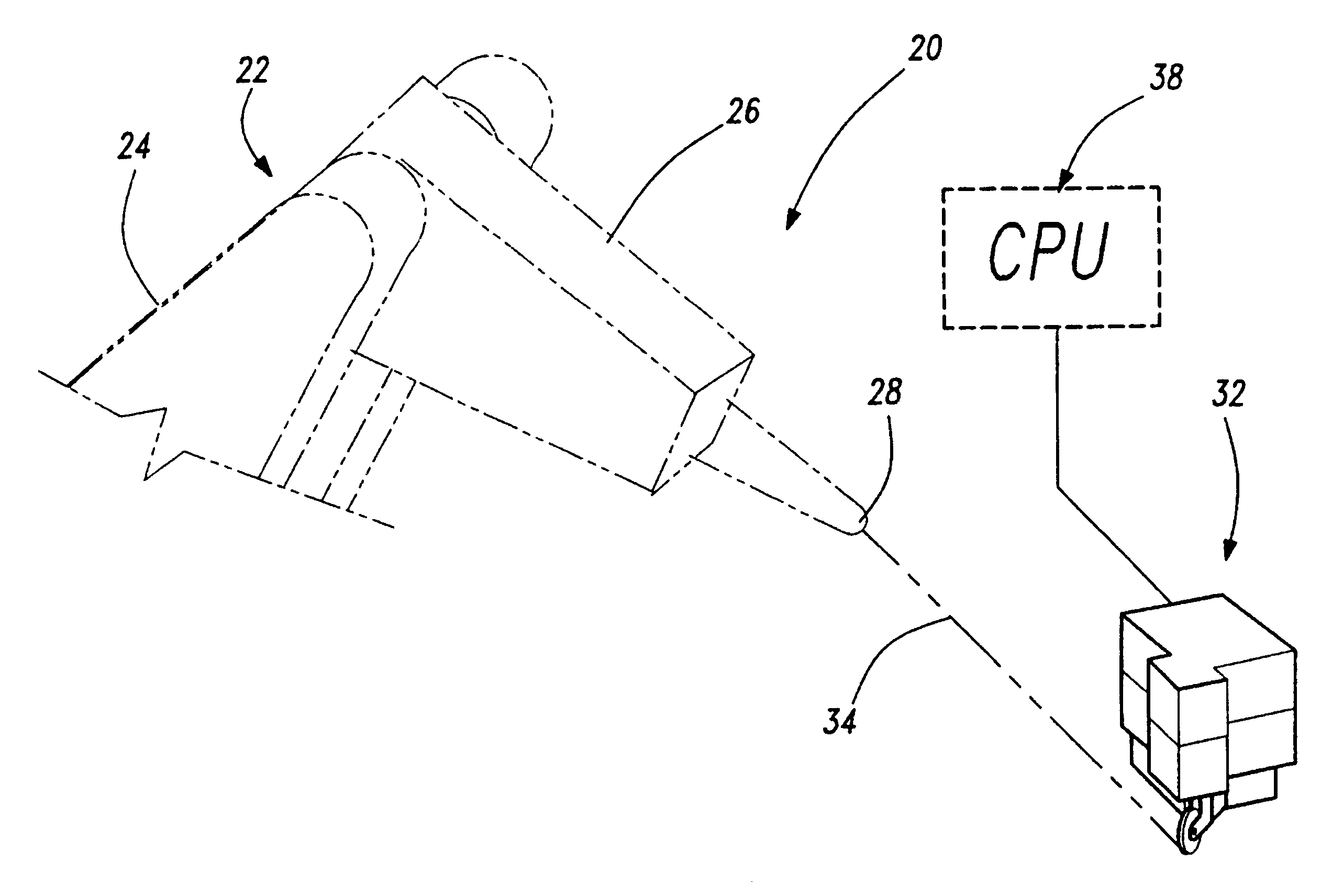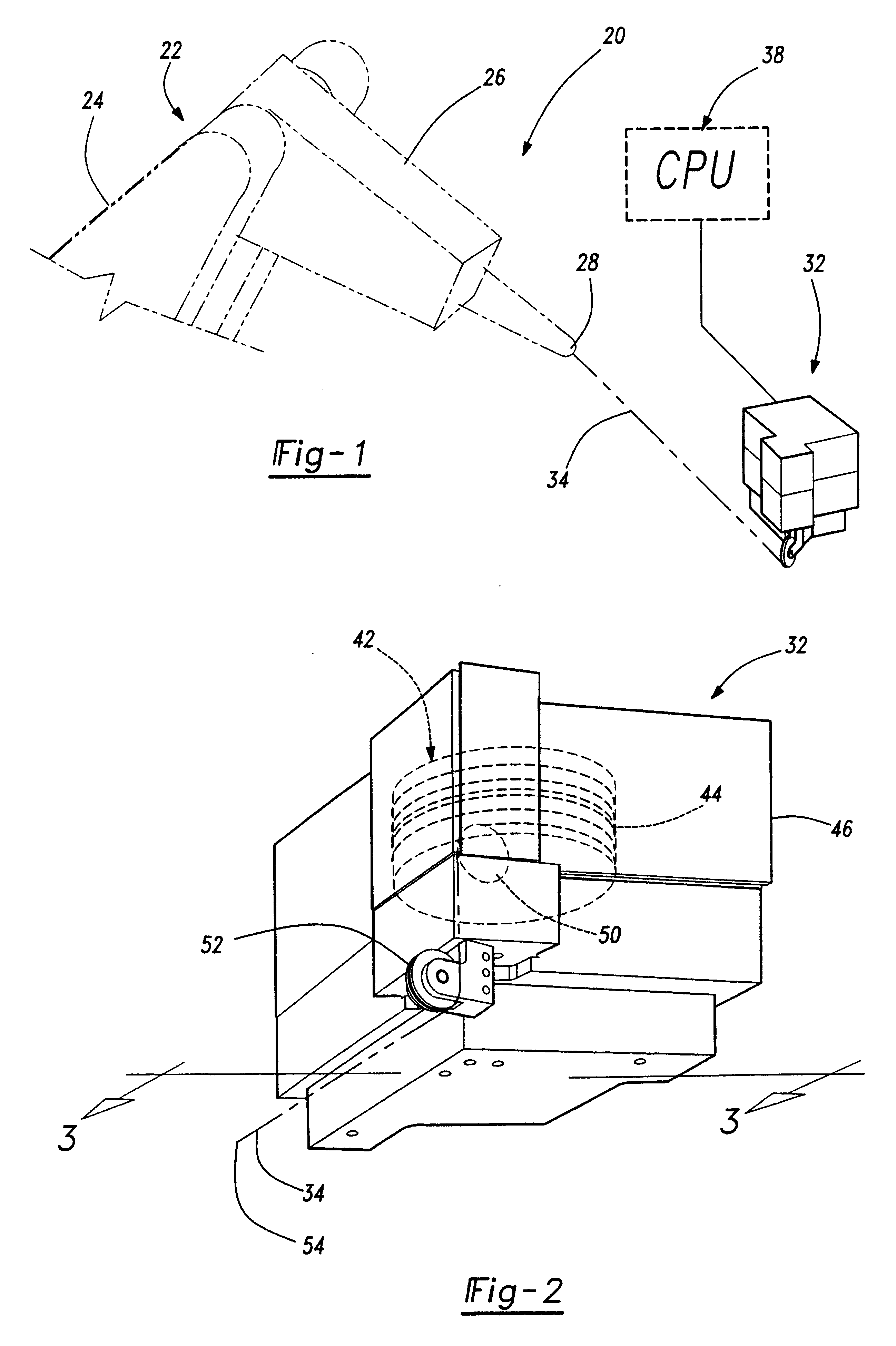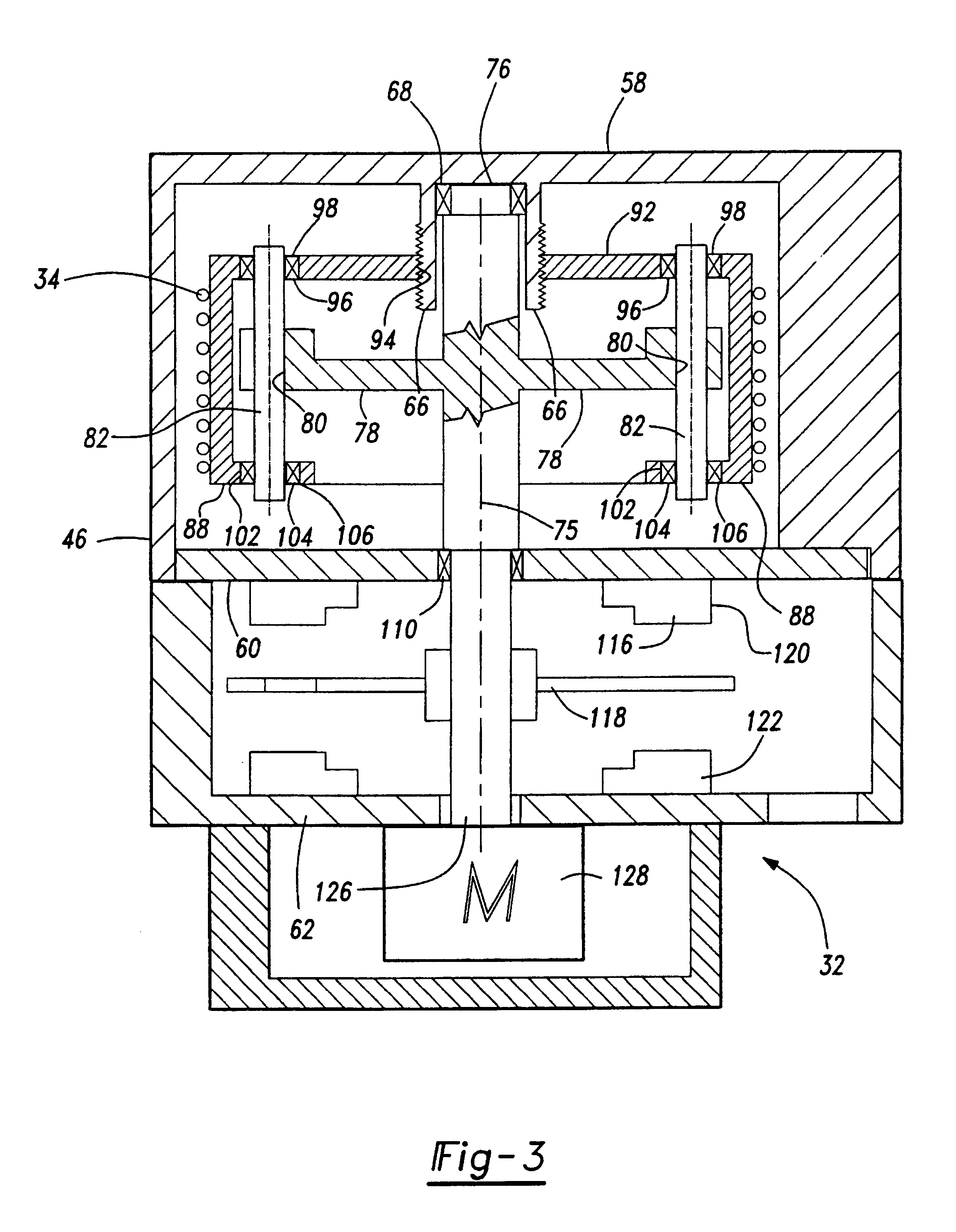Calibration system and displacement measurement device
a technology of displacement measurement and calibration system, which is applied in the direction of electric programme control, instruments, program control, etc., can solve the problems of prior art system numerous problems, robots that cannot actually achieve the commanded cartesian coordinates, and loss of "absolute robot positional accuracy"
- Summary
- Abstract
- Description
- Claims
- Application Information
AI Technical Summary
Problems solved by technology
Method used
Image
Examples
Embodiment Construction
does assume the displacement measurement device, 32, to be located at one generally unknown position relative to the robot, 22. Also, the end of the elongated member, 34, is at one originally unknown position relative to the end of the arm, 26. These originally unknown parameters are calculated together with the actual robot geometry parameters through the calibration software.
In an alternate embodiment, the displacement measurement device can be placed at a minimum of three location on a single fixture holding a production part, these different locations being accurately known with respect to one common coordinate frame. In such an embodiment, the calibration system software of the present invention will identify the mathematical relation in six degrees of freedom between that common coordinate frame and the frame attached to the end of the arm, 26.
In yet another embodiment, the end of the elongated member, 34, can be attached to a minimum of three locations on an end effector whic...
PUM
 Login to View More
Login to View More Abstract
Description
Claims
Application Information
 Login to View More
Login to View More - R&D
- Intellectual Property
- Life Sciences
- Materials
- Tech Scout
- Unparalleled Data Quality
- Higher Quality Content
- 60% Fewer Hallucinations
Browse by: Latest US Patents, China's latest patents, Technical Efficacy Thesaurus, Application Domain, Technology Topic, Popular Technical Reports.
© 2025 PatSnap. All rights reserved.Legal|Privacy policy|Modern Slavery Act Transparency Statement|Sitemap|About US| Contact US: help@patsnap.com



